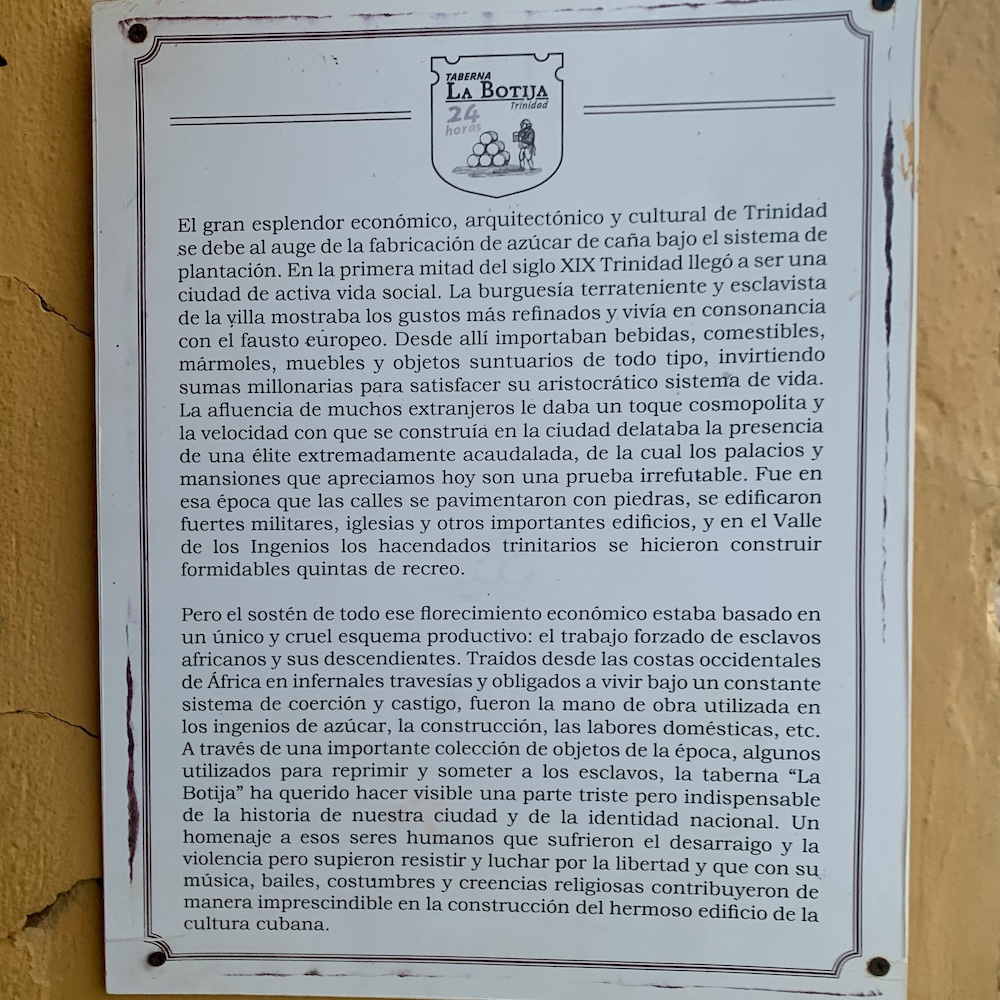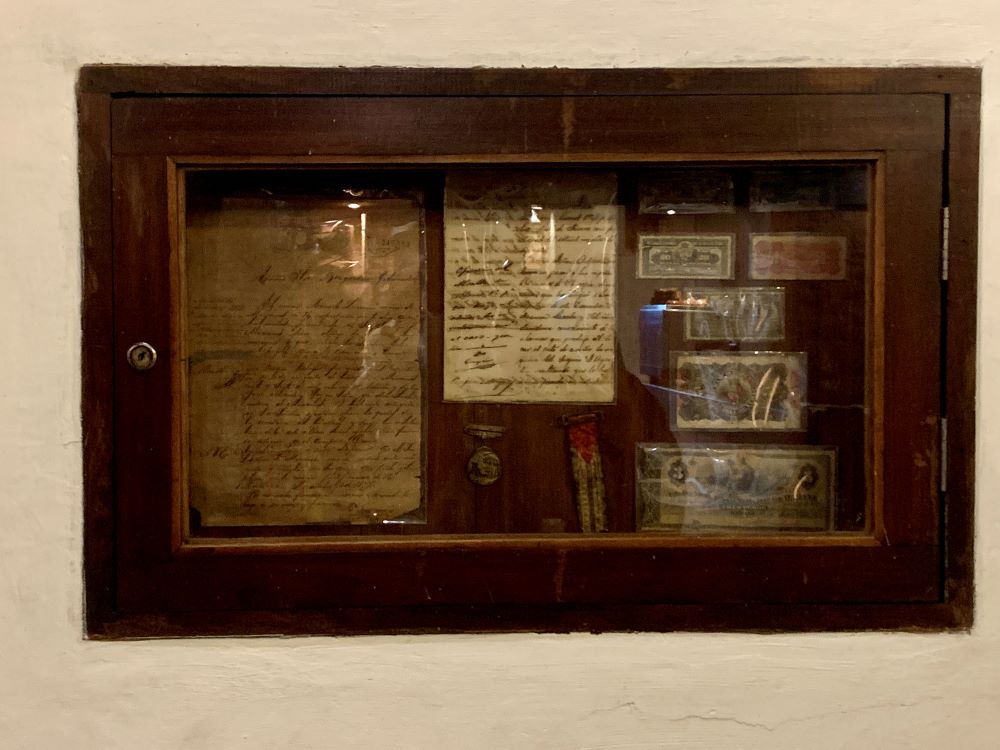Perhaps the most stunning aspect of the tour in La Botija lay in the main dining room. There, the manager stopped proudly before a locked display case on the wall: inside was the original bill of sale for an African slave sold in Trinidad. While the actual authenticity of these objects might not be certain, there was no denying how easily tools used in the brutal repression of millions of people could serve as acceptable restaurant décor. Accordingly, a plaque at the entrance of the tavern insisted that its owners’ treatment of slavery represented a thoughtful recognition of Cuba’s past: “Through an important collection of objects from the time, some used to repress and subjugate slaves, ‘La Botija’ tavern seeks to shed light on a sad but indispensable part of the history of our city and national identity. A tribute to those human beings who suffered upheaval and violence but knew how to resist and fight for freedom and who with their music, dances, customs and religious beliefs contributed in an essential way to the construction of the beautiful edifice of Cuban culture.” The way La Botija so confidently assumes itself as an authority on Afro-Cuban culture is indicative of the ways in which any public discussions of race and racism in Cuba remain taboo and ideologically suspect in the eyes of the ruling party, who officially declared victory over racism in the 1960s. The absence of such discussions explains why Cubans like the owner, manager, and staff of La Botija could take pride in celebrating and displaying the evidence of genocide in a context of consumption and leisure. Trinidad, June 2022.
Created by Guest Curator Arturo S. González, University of Miami.

